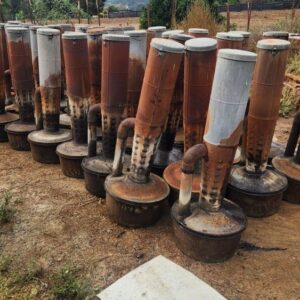In a world obsessed with hustle, productivity, and 5 a.m. wake-up calls, burnout is not just common—it’s almost expected. The pressure to “do more” and “be more” never stops.
But what if working non-stop isn’t the path to success? What if the real productivity boost comes from balance, not burnout?
Let’s dive into the symptoms, causes, and most importantly—practical solutions to avoid burnout in today’s hustle culture.

What Is Burnout?
According to the World Health Organization, burnout is a syndrome resulting from chronic workplace stress that hasn’t been successfully managed. But it’s not just “work stress.” It’s emotional exhaustion, a lack of personal accomplishment, and detachment from what once mattered.
Key Signs of Burnout:
- Constant fatigue (even after sleeping)
- Reduced performance and focus
- Cynicism or detachment from work
- Headaches, insomnia, or muscle tension
- A feeling of “What’s the point?”
If you’re ticking off more than 2 of these, your body is waving a red flag.
Why Hustle Culture is a Trap
Hustle culture convinces us that the only way to win is to work ourselves into the ground. But here’s the reality: constant hustle leads to diminishing returns.
The more we push, the more we exhaust our mental and physical resources. As Harvard Business Review reports, over 60% of employees returning to offices post-pandemic are already feeling burned out.
What’s worse? Hustle culture glorifies this. It makes you feel guilty for taking a break.
Step 1: Redefine What “Being Productive” Means
In the hustle world, productivity often means staying busy. But busyness is not the same as effectiveness.
Instead, adopt the Pareto Principle: 80% of your results come from 20% of your efforts.
Ask yourself daily:
- “What’s the ONE thing I can do that makes everything else easier or irrelevant?” (Inspired by the book The One Thing)
Focusing on fewer, higher-impact tasks leads to more satisfaction—and less stress.

Step 2: Train Your Brain for Resilience
Stress isn’t always bad. However chronic, unmanaged stress leads to burnout. The key is building emotional flexibility.
According to Psychology Today, resilience is the process of adapting well in the face of adversity or trauma.
Daily habits that build resilience:
- Practice gratitude journaling
- Use meditation apps like Headspace or Insight Timer
- Learn how to self-regulate through breathwork (box breathing is a favorite)
- Cut down on digital noise (turn off 90% of your notifications)
Mental health is not a luxury—it’s your foundation.
Step 3: Protect Rest Like It’s Revenue
No one is performing well on 4 hours of sleep and 5 cups of coffee. That’s a crash waiting to happen.
According to the Sleep Foundation, sleep deprivation affects memory, focus, decision-making, and even immune health.
Non-negotiables for rest:
- Sleep 7–9 hours every night
- Take at least 10 minutes of mental rest per 90 minutes of work
- Unplug completely for 24 hours every 1–2 weeks (digital detox)
And remember, creative rest (reading, painting, nature walks) is just as important as physical rest.
Step 4: Set Boundaries and Don’t Apologize
Burnout thrives in people-pleasing.
If you’re working late, replying to messages on weekends, and saying yes to every meeting—you’re slowly draining your energy battery.
Pro-level boundary setting:
- Set “do not disturb” hours on your phone
- Block off Focus Time on your calendar like you would a meeting
- Learn to say “I don’t have the capacity for this right now” instead of overcommitting
- Use email auto-responders to reinforce your availability
Boundaries are not selfish—they are self-protection.
Step 5: Create Your Burnout Recovery Kit
If you’re already in burnout mode, don’t ignore it—treat it like a physical injury.
Build your own “recovery system” using 3 pillars: Rest, Nourishment, and Joy.
Example Burnout Recovery Plan:
PillarWhat To Do
Rest Digital detox Sundays, naps, no-alarm mornings
Nourishment Hydration, whole foods, magnesium for sleep
Joy Creative hobbies, low-pressure fun, reconnecting with friends
Burnout recovery takes weeks, not days. Go slow.
For deeper guidance, check out Verywell Mind’s guide.
Step 6: Reconnect to Meaningful Work
Burnout doesn’t always come from working too much. Sometimes it comes from working without purpose.
A Gallup study found that people who feel their job has meaning are significantly less likely to experience burnout—even under stress.
Ask Yourself:
- What part of my work energizes me?
- What values do I want to be reflected in my job?
- How can I bring more alignment into my daily tasks?
Work with soul, not just with schedule.

Step 7: Normalize Slower, Sustainable Growth
Social media has taught us to expect overnight success. But it’s a myth.
Meaningful careers and healthy lives are built slowly. Intentionally.
Try this new mindset:
- Rest is part of the work. Period.
- You don’t need to monetize every hobby.
- You don’t have to “earn” your downtime.
- It’s okay to grow at your own pace.
As James Clear says:
“You should be far more concerned with your current trajectory than with your current results.”
Bonus: Tools That Help Reduce Burnout
Use modern tools to automate, simplify, and clarify.
Our favorite burnout-busters:
- Notion or ClickUp for organizing tasks
- RescueTime to track screen time and focus
- Pomofocus for Pomodoro-based work sessions
- Noisli or Brain.fm for deep work music
If you’re going to hustle—let technology take some of the weight off.
Final Thoughts: Hustle Is Hollow Without Health
You are not a robot. You are a human being with limits, rhythms, and needs.
Burnout isn’t weakness—it’s wisdom. It’s your body’s way of saying:
“I can’t carry all of this anymore.”
Listen early. Adjust often. Rest unapologetically.
Because true productivity? It starts with you, whole and well.
Quick Anti-Burnout Self-Check
- I get 7–8 hours of sleep regularly
- I set boundaries around work
- I take full breaks—mentally and physically
- I know why I’m doing what I do
- I do something fun or joyful each week
- I ask for help when I need it
If you couldn’t check off at least 4—it’s time for a reset.
Want more? Explore these expert guides:






